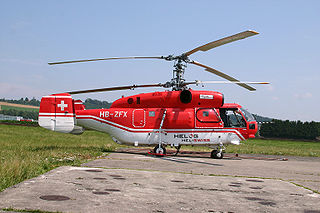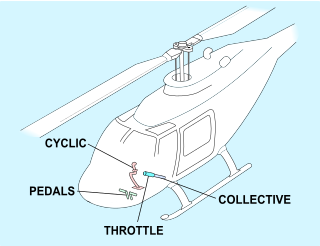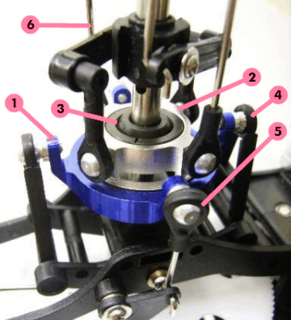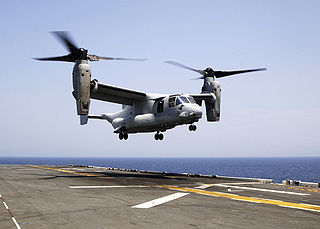 W
WThe BERP rotor blade design was developed under the British Experimental Rotor Programme. The initial BERP rotor blades were developed in the late 1970s to mid-1980s as a joint venture programme between Westland Helicopters and the Royal Aircraft Establishment (RAE), with Professor Martin Lowson as a co-patentee. The goal was to increase the helicopters lifting-capability and maximum speed using new designs and materials.
 W
WCoaxial rotors or coax rotors are a pair of helicopter rotors mounted one above the other on concentric shafts, with the same axis of rotation, but turning in opposite directions (contra-rotating). This rotor configuration is a feature of helicopters produced by the Russian Kamov helicopter design bureau.
 W
WA Fenestron is a protected tail rotor of a helicopter operating like a ducted fan. The term Fenestron is a trademark of multinational helicopter manufacturing consortium Airbus Helicopters. The word itself comes from the Occitan term for a small window, and is ultimately derived from the Latin word fenestra for window.
 W
WThe Helicopter AirStair, designed in house at Hydro One Inc, Ontario, Canada, can be attached to a Eurocopter AS 350 B2 helicopter.
 W
WA helicopter pilot manipulates the helicopter flight controls to achieve and maintain controlled aerodynamic flight. Changes to the aircraft flight control system transmit mechanically to the rotor, producing aerodynamic effects on the rotor blades that make the helicopter move in a deliberate way. To tilt forward and back (pitch) or sideways (roll) requires that the controls alter the angle of attack of the main rotor blades cyclically during rotation, creating differing amounts of lift (force) at different points in the cycle. To increase or decrease overall lift requires that the controls alter the angle of attack for all blades collectively by equal amounts at the same time, resulting in ascent, descent, acceleration and deceleration.
 W
WIntermeshing rotors on a helicopter are a set of two rotors turning in opposite directions, with each rotor mast mounted with a slight angle to the other, in a transversely symmetrical manner, so that the blades intermesh without colliding. The arrangement allows the helicopter to function without a tail rotor, which saves power. However, neither rotor lifts directly vertically, which reduces efficiency per each rotor.
 W
WJesus nut is a slang term for the main rotor retaining nut or mast nut, which holds the main rotor to the mast of some helicopters. The related slang term Jesus pin refers to the lock pin used to secure the retaining nut. More generally, Jesus nut has been used to refer to any component that is a single point of failure which results in catastrophic consequences.
 W
WNOTAR is a helicopter system which avoids the use of a tail rotor. It was developed by McDonnell Douglas Helicopter Systems. The system uses a fan inside the tail boom to build a high volume of low-pressure air, which exits through two slots and creates a boundary layer flow of air along the tailboom utilizing the Coandă effect. The boundary layer changes the direction of airflow around the tailboom, creating thrust opposite the motion imparted to the fuselage by the torque effect of the main rotor. Directional yaw control is gained through a vented, rotating drum at the end of the tailboom, called the direct jet thruster. Advocates of NOTAR believe the system offers quieter and safer operation over a traditional tail rotor.
 W
WA blade vortex interaction (BVI) is an unsteady phenomenon of three-dimensional nature, which occurs when a rotor blade passes within a close proximity of the shed tip vortices from a previous blade. The aerodynamic interactions represent an important topic of investigation in rotorcraft research field due to the adverse influence produced on rotor noise, particularly in low speed descending flight condition or maneuver, which generates high amplitude impulsive noise.
 W
WA helicopter main rotor or rotor system is the combination of several rotary wings and a control system that generates the aerodynamic lift force that supports the weight of the helicopter, and the thrust that counteracts aerodynamic drag in forward flight. Each main rotor is mounted on a vertical mast over the top of the helicopter, as opposed to a helicopter tail rotor, which connects through a combination of drive shaft(s) and gearboxes along the tail boom. The blade pitch is typically controlled by a swashplate connected to the helicopter flight controls. Helicopters are one example of rotary-wing aircraft (rotorcraft). The name is derived from the Greek words helix, helik-, meaning spiral; and pteron meaning wing.
 W
WIn helicopters the rotorhead is the part of the rotor assembly that joins the blades to the shaft, cyclic and collective mechanisms. It is sometimes referred to as the rotor "hub".
 W
WA swashplate is a device that translates input via the helicopter flight controls into motion of the main rotor blades. Because the main rotor blades are spinning, the swashplate is used to transmit three of the pilot's commands from the non-rotating fuselage to the rotating rotor hub and mainblades.
 W
WThe tail rotor is a smaller rotor mounted vertically or near-vertically at the tail of a traditional single-rotor helicopter, where it rotates to generate a horizontal thrust in the same direction as the main rotor's rotation. The tail rotor's position and distance from the helicopter's center of mass allow it to develop enough thrust leverage to counter the reactional torque exerted on the fuselage by the spinning of the main rotor. Without the tail rotor or other anti-torque mechansims, the helicopter would be constantly spinning in the opposite direction of the main rotor when flying.
 W
WTandem rotor helicopters have two large horizontal rotor assemblies mounted one in front of the other. Currently this configuration is mainly used for large cargo helicopters.
 W
WThe Target Acquisition and Designation Sights, Pilot Night Vision System (TADS/PNVS) is the combined sensor and targeting unit fitted to the Boeing AH-64 Apache helicopter. Both systems are independent, but housed together.
 W
WA tip jet is a jet nozzle at the tip of some helicopter rotor blades, used to spin the rotor, much like a Catherine wheel firework. Tip jets replace the normal shaft drive and have the advantage of placing no torque on the airframe, thus not requiring the presence of a tail rotor. Some simple monocopters are composed of nothing but a single blade with a tip rocket.
 W
WTransverse rotor rotorcraft have two large horizontal rotor assemblies mounted side by side.